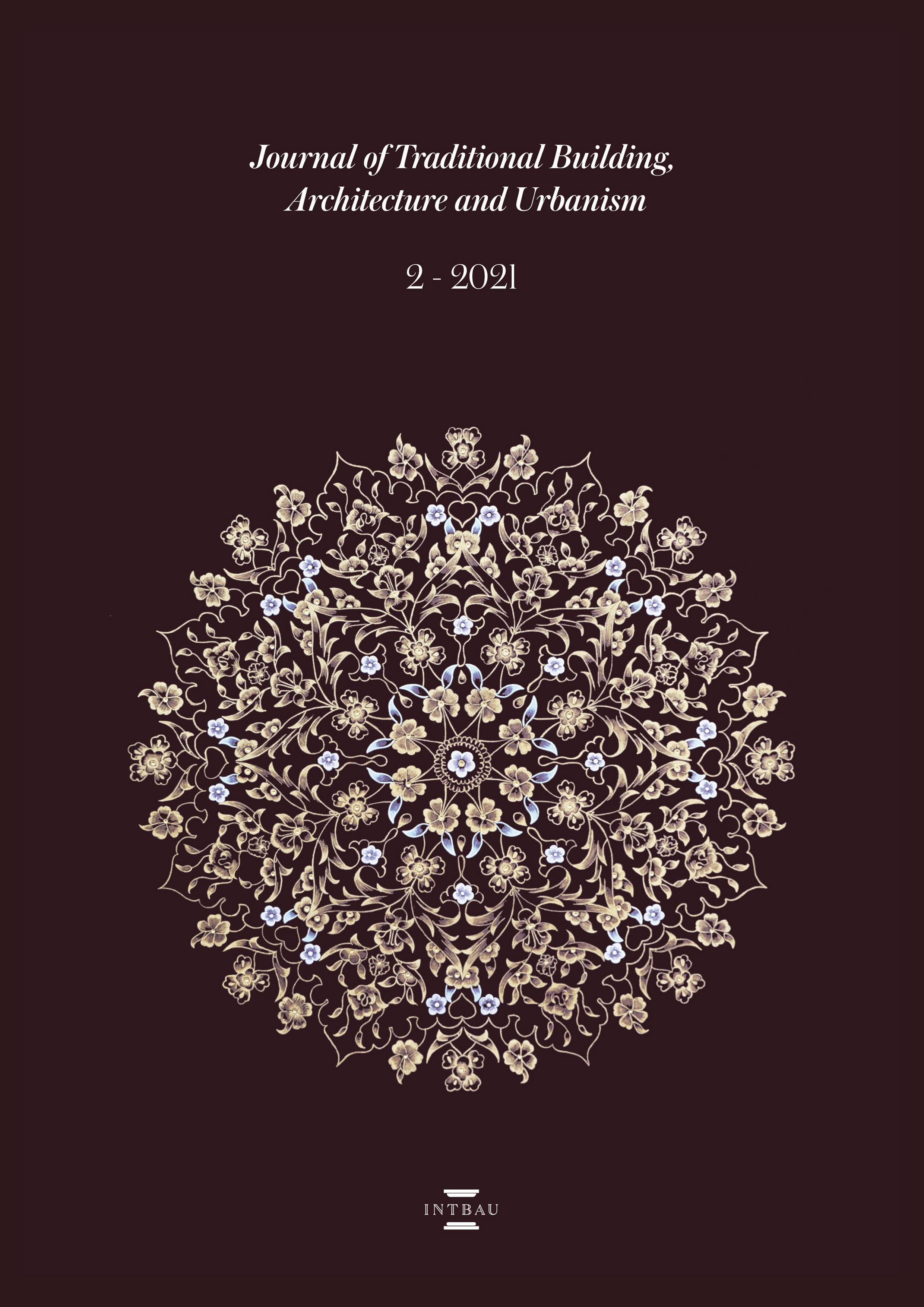Resumen
Este artículo muestra que la forma de afrontar los problemas de construcción no era esencialmente distinta en Europa y Japón, a pesar de las grandes diferencias culturales. Expresiones culturales diversas no implican inevitablemente formas diferentes de pensar. Este artículo compara dos hechos aparentemente contradictorios. Una amplia gama de análisis de la “otredad” japonesa en la percepción “occidental”, así como en la autóctona, domina el discurso científico. Los resultados de exhaustivas investigaciones arquitectónicas sobre el terreno parecen demostrar lo contrario. Estos resultados ponen de relieve que antecedentes y condiciones similares e iguales dan lugar a tipologías de edificios y técnicas constructivas similares e iguales. Además, demuestran que los métodos para afrontar una tarea están predominantemente marcados por el pragmatismo. Por todo el mundo se desarrollaron soluciones idénticas mucho antes de la globalización. Sin embargo, este descubrimiento no debe llevarnos a la conclusión de que un mismo aspecto puede evaluarse igualmente en cuanto a su contenido.
Citas
Ando, Ryosuke. 1991. Nara rokudaiji daikan; Horyuji I. Tokyo.
Barthes, Roland. 1983. The Empire of Signs. Translated by Richard Howard. New York: Hill and Wang.
Bognar, Botond. 1988a. Archaeology of a Fragmented Landscape. In Papadakis, Andreas (ed.), Japanese Architecture, 15-25. London: Academy Editions.
Bognar, Botond. 1988b. The Japanese Order of Things: Notes on Humanism and the Man-Environment Relationship in Japan. In Form, Being, Absence: Architecture and Philosophy, 2, 148-162. New York: Rizzoli International.
Ciorra, Pippo; and Ostende, Florence. 2016. Japaneseness. The Japanese House: Architecture and Life after 1945, 67-83. Venice: Marcilio Editori.
Edlinger, Astrid. 2008. The Japanese Example – or the Art of Appropriation. In Herrle, Peter et al. (eds.), Architecture and Identity, 57-71. Berlin: Lit.
Engel, Heinrich. 1964. The Japanese House: Tradition for Contemporary Architecture. Rutland: Tuttle.
Gropius, Walter. 1967. Apollo in der Demokratie. Mainz: Kupferberg.
Herrle, Peter. 2008. Architecture and Identity? Steppenwolf and the Carriers of Change. In Herrle, Peter et al (eds.), Architecture and Identity, 11-22. Berlin: Lit.
Isozaki, Arata. 2011. Japan-ness in Architecture. Cambridge: MIT Press.
Löffler, Beate. 2015a. The Perpetual Other. Western Architecture in the Western Imagination. International Journal for History, Culture and Modernity, vol. 3, 3: 82-112.
Löffler, Beate. 2015b. Beständiger Wandel. Japanische Architektur als interpretatorische Verfügungsmasse (1850-2015). In Picht, Laura et al. (eds.), The Limits of Change. Was ist der Wert der beständigen Dinge?, 197-213. Berlin: Neofelis Verlag.
Macrobius, Ambrosius Theodosius. [431] 2011. Saturnalia. Edited and translated by Kaster, Robert A. Cambridge: Harvard University Press.
Mitsutani, Takumi. 2003. A Dendrochronological Investigation of Construction Materials Used in the Shosoin Repository. Bulletin of Office of the Shosoin Treasure House, vol. 25: 81-84. https://shosoin.kunaicho.go.jp/en-US/bulletin?p=3 (consulted on 16/02/2021).
Mitsutani, Takumi. 2006. A Dendrochronological Investigation of Construction Materials Used in the Shosoin Repository. Bulletin of Office of the Shosoin Treasure House, vol. 28: 66-70. https://shosoin.kunaicho.go.jp/en-US/bulletin?p=3 (consulted on 16/02/2021).
Mitsutani, Takumi. 2016. A Dendrochronological Investigation of Construction Materials Used in the Shosoin Repository (III). Bulletin of Office of the Shosoin Treasure House, vol. 38: 81-88. https://shosoin.kunaicho.go.jp/en-US/bulletin?p=2 (consulted on 16/02/2021).
Muschg, Adolf. 2007. Wegbeschreibung minimal. In Wolfsberg, Kunstmuseum (ed.), Japan und der Westen. Die erfüllte Leere, 211-219. Köln: DuMont.
Nara Bunkazai Hozon Jimusho (Ed.). 1967. Kokuh? T?daiji Sh?r? Sh?ri K?ji H?kokusho. Nara: Nara Bunkazai Hozon Jimusho.
Nish, Ian. 1998. The Iwakura Mission in America and Europe. A New Assessment. Richmond: Japan Library.
Nitschke, Günter. 2002. Architektur und Ästhetik eines Inselvolkes. In Schittich, Christian (ed.), Im Detail: Japan. Architekten, Konstruktionen, Stimmungen, 15-35. Basel: Birkhäuser.
Pantzer, Peter. 2002. Kume Kunitake: Die Iwakura-Mission. Das Logbuch des Kume Kunitake über den Besuch der japanischen Sondergesellschaft in Deutschland, Österreich und der Schweiz im Jahre 1873. München: Ludicium Verlag.
Schiermeier, Kris. 2014. Imitation oder Innovation? Van Goghs Japonaiserien und die japanische Kunst der Meiji-Zeit. In Irvine, Gregory (ed.), Der Japonismus und die Geburt der Moderne. Die Kunst der Meiji-Zeit, 140-165. Leipzig: Seemann.
Schoper, Tom. 2017. Ähnlichkeit und Differenz. In neuem Kontext das eigene anders spüren. In Ein Haus. Werk - Ding - Zeug?, 17-49. Wien: Passagen Verlag.
Seckel, Dietrich. 1959. Emakimono. Translated by Maxwell Brownjohn. London: Jonathan Cape.
Snodgrass, Adrian. 2004. Thinking through the gap: The space of Japanese Architecture. Architectural Theory Review, vol. 9, 2, 65-85.
Speidel, Manfred (ed.). 2003. Bruno Taut. Ich liebe die japanische Kultur. Kleine Schriften über Japan. Berlin: Gebrüder Mann.
Speidel, Manfred. 2009. Nachwort. In Taut, Bruno. Nippon mit europäischen Augen gesehen. Berlin: Mann.
Taut, Bruno. 1936. Grundlinien der Architektur Japans. Tokyo: Kokusai Bunka Shinkokai.
Taut, Bruno. 1937. Houses and People of Japan. Tokyo: Sanseido.
Tetsur?, Watsuji. 2017. F?do; Wind und Erde: Der Zusammenhang zwischen Klima und Kultur. Berlin: Matthes & Seitz.
Verghese, George. 2003. The Way of the Detail in Japanese Design. IDEA Journal, vol. 4, 1: 161-172.
Wilde, Oscar. [1891] 2019. Intentions. GlobalGrey. https://www.globalgreyebooks.com/intentions-ebook.html (consulted on 14/02/2021).
Yoshioka, Hiroshi. 1995. Samurai and self-colonization in Japan. In Pieterse, Jan N. (ed.), The decolonization of imagination, 99-112. London: Zed Books.
Zwerger, Klaus. 2007-08. Präsentation japanischer Baukultur im Wien des 19. Jahrhunderts. Archiv, 57/58: 18-220.
Zwerger, Klaus. 2020. Cereal Drying Racks: History and Typology of Wood Buildings in Europe and East Asia. Basel: Birkhäuser.

Esta obra está bajo una licencia internacional Creative Commons Atribución-NoComercial-SinDerivadas 4.0.

